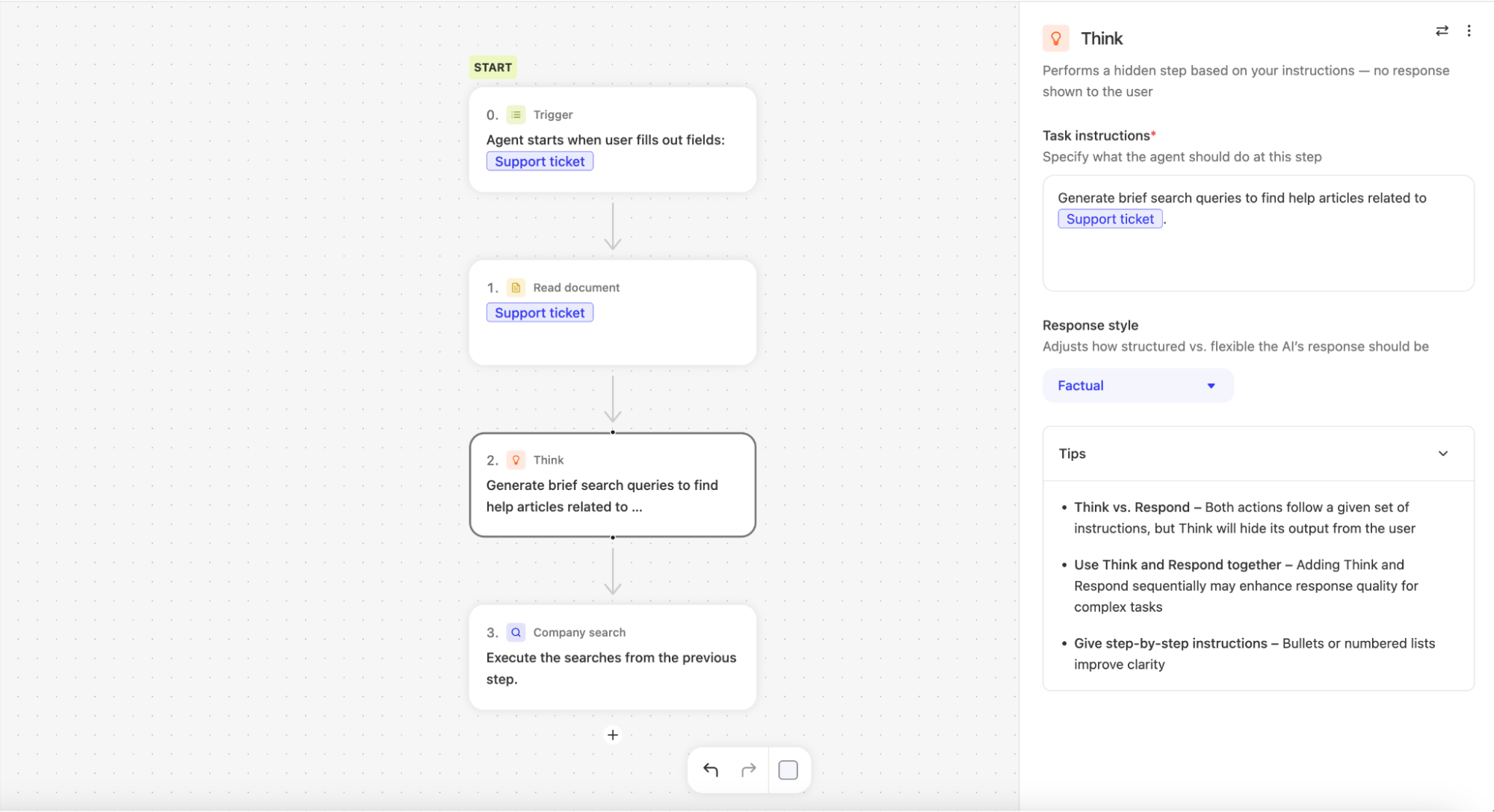Skip to main contentThe Think step follows your instructions to perform reasoning on the contents of the agent’s memory. When it runs, the Think step processes your instructions and generates text that represents its reasoning. This text is not shown to the user, but it is added to the agent’s memory so that later steps can reference it to help accomplish the agent’s objective. It operates similarly to “Chain of Thought” prompting, a technique where providing an agent with intermediate reasoning steps can allow it to perform more complex tasks.
Usage examples
The Think step can be useful for processing information retrieved by the agent before generating a response. For example, you can use it to extract specific pieces of information from documents previously read into the agent’s memory in order to use that specific information in later steps:

Configuration
In addition to the natural language Task instructions which inform the reasoning performed by the Think step, you can also modify the Response style. Response style has three options: Factual, Balanced, and Creative.
Factual (default)
Minimizes “randomness” in LLM responses
- Example use cases:
- Information retrieval
- Data analysis
Balanced
Provides accurate but flexible responses
- Example use cases:
- Report generation
- Draft messaging with data
Creative
- Provides diverse, expressive responses
- Example use cases:
- Brainstorming
- Marketing content generation
